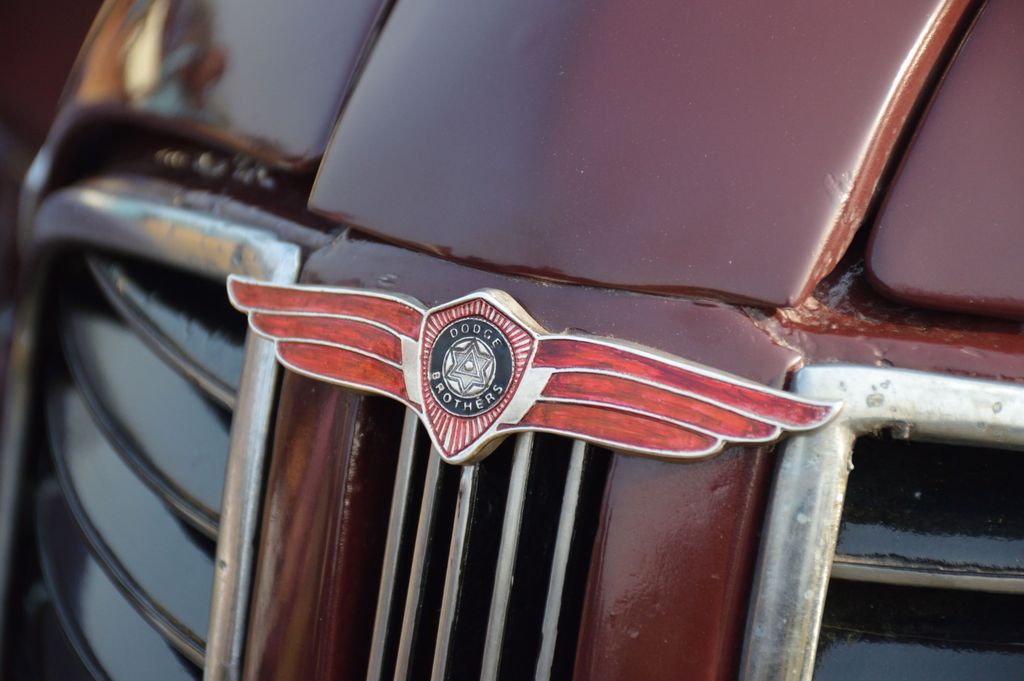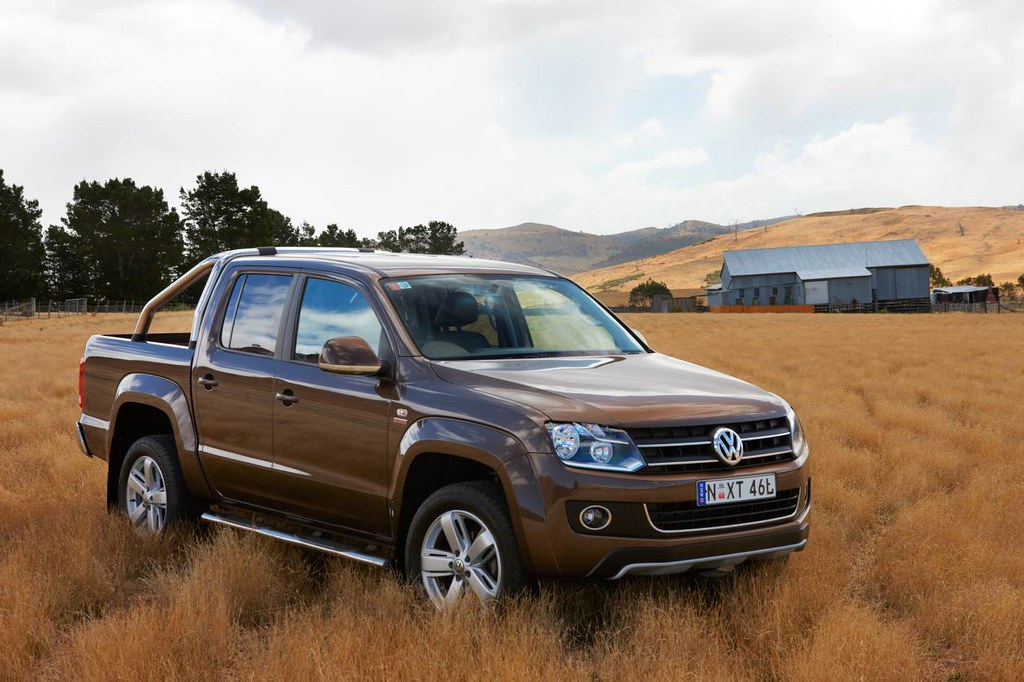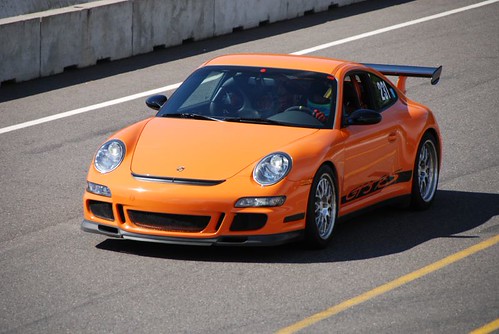
Ever since the venerable Harley Earl sketched his magnificent Buick Y-Job in 1938, a new tradition was born in the automotive world: the concept car. These audacious vehicles, often appearing at auto shows with futuristic features and cutting-edge designs, are usually seen as unattainable dreams—visions of what could be, showcasing the coolest new technology and stunning flair that often seems too impractical or expensive for mass production. They are, quite frankly, everything an enthusiast might want but can never have, pushing boundaries of design, engineering, and imagination to their absolute limits.
Yet, every so often, the line between visionary concept and tangible reality blurs. While many concept cars are purely stylistic exercises or technological showcases, a select few are built with a clear trajectory toward the showroom floor. These rare gems manage to retain much of their initial daring and innovative spirit, undergoing surprisingly modest changes on their journey from a designer’s rendering to a car you can actually purchase. When these concepts make it through the gauntlet of production challenges, the results are often nothing short of spectacular, reshaping the automotive landscape and creating legends.
Join us on an exhilarating journey as we delve into the fascinating stories of 14 such vehicles—experimental concepts that against all odds, became legendary production cars. In this first section, we’ll explore seven trailblazing examples that defied expectations, proving that sometimes, even the wildest dreams can indeed come true, setting new benchmarks for design, performance, and technological integration. Prepare to be inspired by the ingenuity and persistence behind these incredible machines, which bridges the gap between ambitious vision and the thrill of the open road.

1. **Acura NSX (Original)**For a couple of decades following Lamborghini’s game-changing 1967 Miura, the mid-engine supercar remained an exclusive domain, largely confined to niche Italian automakers. Ferrari, Maserati, DeTomaso, and a handful of other boutique carmakers held a virtual monopoly, defining what a supercar could be. This Italian hegemony, however, faced an unexpected challenger that emerged from the East, poised to redefine the segment with a blend of exotic performance and Japanese reliability.
The challenge came in the form of a concept from Japanese automaker Honda, which unveiled the Acura NS-X concept at the 1989 Chicago Auto Show. Developed under the evocative codename “New Sports Experimental,” Honda embarked on a mission to transcend its reputation for practical, economical, and reliable cars. The company aspired to demonstrate its capability in crafting highly desirable vehicles that could deliver performance far beyond conventional expectations, marking a significant strategic shift for the brand.
This ambitious concept featured an array of sophisticated design and engineering choices that were truly cutting-edge for its time. It incorporated advanced technologies such as four-channel anti-lock braking, electric power steering, and, notably, an all-aluminum construction. These features were not merely for show; they were integral to Honda’s vision of a supercar that was not only blisteringly fast but also technologically advanced and exceptionally agile, setting a new standard for the genre.
When the NS-X concept eventually transitioned into the production NSX, it did so with only modest changes, a testament to the original concept’s foresight. One notable alteration was a slight increase in length, made to accommodate its DOHC VTEC V6 engine. And while the production model produced a seemingly modest 270 horsepower, its remarkably low weight ensured it remained incredibly fast, capable of competing with its European counterparts. Furthermore, the NSX introduced a rare, almost unheard-of attribute in the supercar world: reliability. It was not only the first mass-produced car with an all-aluminum monocoque chassis but also earned the distinction of being the first supercar you could genuinely drive every day, just like any other Honda, fundamentally altering perceptions of high-performance vehicles.
Car Model Information: 1992 Acura NSX Base
Name: Honda NSX
Caption: Acura NSX (first generation, NA2) along with some NA1 NSX cars
Manufacturer: Honda
Aka: Acura NSX (North America)
Production: 1990–2006 (NA1/2),2016–2022 (NC1/2)
Class: Sports car
ModelYears: 1991–2006,2017–2023
Categories: 2000s cars, 2010s cars, 2020s cars, 24 Hours of Le Mans race cars, All-wheel-drive vehicles
Summary: The Honda NSX (sold in North America as the Acura NSX) is a two-seater sports car manufactured by Honda over two generations. The first generation was produced from 1990 until 2006, whilst the second generation was made from 2016 to 2022. The first generation was introduced as a two-door coupé, with a two-door targa top variant later added, and has a rear mid-engine, rear-wheel-drive layout. The second generation is only a coupé, and has a rear mid-engine, all-wheel-drive layout. The first generation has a transversely-mounted naturally-aspirated engine with a V6 configuration, whilst the second generation has a twin-turbocharged V6 engine supplemented by multiple electric motors in a petrol-electric hybrid drivetrain.
The origins of the NSX can be traced back to 1984, with the HP-X (Honda Pininfarina eXperimental) concept, for a 3.0 L (180 cu in) V6 rear mid-engine, rear-wheel drive sports car. Honda, with the intention of meeting or exceeding the performance of the then V8 engine Ferrari range, committed to the project, aiming at both reliability and a lower price. The concept evolved and had its name changed to NS-X, which stood for “New”, “Sportscar” “eXperimental”, although the production model launched as the NSX.
Get more information about: Honda NSX
Buying a high-performing used car >>>
Brand: Acura Model: NSX
Price: $93,999 Mileage: 62,145 mi.
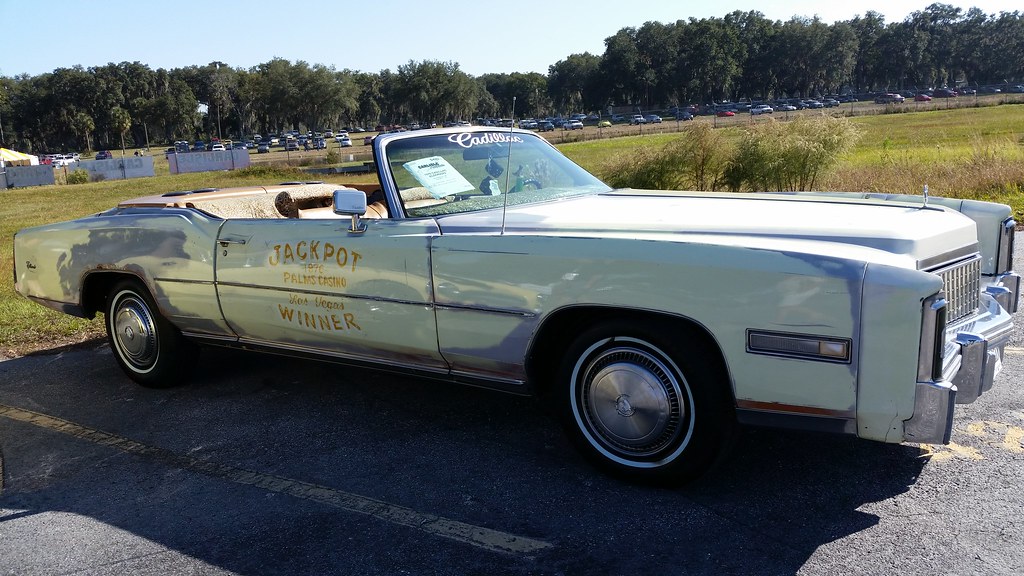
2. **Cadillac Eldorado**Cadillac, established in 1902 and named after Detroit’s founder, stands as one of the oldest and most storied car companies in the United States. From its inception, Cadillac meticulously carved out a reputation as a preeminent leader in the luxury automobile market, consistently offering opulent cars equipped with the latest technology. This unwavering commitment to sophistication and innovation became a hallmark of the brand, cementing its position at the pinnacle of American automotive excellence.
As Cadillac approached its momentous 50-year golden anniversary, the company chose to commemorate this significant milestone in the most appropriate and spectacular way imaginable: with a truly special car. This vehicle was a one-off concept convertible show car, meticulously built for display at the 1952 General Motors Motorama. It served as a grand demonstration of the ample luxury that Cadillac was capable of offering, a rolling testament to half a century of unparalleled automotive craftsmanship and prestige.
Consistent with the celebratory theme of its golden anniversary, Cadillac bestowed upon this magnificent creation the name Eldorado, evoking the mythical city of gold. Built upon the existing Series 62 model, the show car was lavishly adorned with multiple luxury upgrades that captivated onlookers. These included modern conveniences such as power windows and an AM/FM radio, alongside the novel feature of a disappearing top, which added to its dramatic flair and sense of exclusivity.
The interior was equally, if not more, impressive, featuring a compass elegantly positioned atop the dashboard and aviation-style gauges meticulously installed above the glove box. These unique instruments included a tachometer, a clock with a stopwatch function, an altimeter, and a manifold pressure gauge, underscoring Cadillac’s commitment to cutting-edge design and advanced functionality. The Eldorado also notably stood as one of the very first Cadillacs to offer air conditioning as an option, highlighting its role as a pioneer in automotive comfort. The overwhelming success of the show car at the Motorama prompted its inclusion in the lineup for the 1953 model year, albeit at an extraordinarily high price of $7,700, with air conditioning adding an additional $620 to that cost. The decision proved to be a resounding success, as Cadillac proudly retained the Eldorado model until 2002, a remarkable 50 years after its debut, etching its name into automotive history as an icon of American luxury and design.
Car Model Information: 1976 Cadillac Eldorado Convertible
Caption: 1963 Cadillac Eldorado Convertible
Name: Cadillac Eldorado
Manufacturer: Cadillac
Production: 1952–2002
Layout: Front-engine, rear-wheel-drive layout
Aka: Cadillac Fleetwood Eldorado
Class: Personal luxury car
Successor: Cadillac CTS
Categories: 1960s cars, 1970s cars, 1980s cars, 1990s cars, 2000s cars
Summary: The Cadillac Eldorado is a luxury car manufactured and marketed by the Cadillac Motor Car Division of General Motors from 1952 until 2002, over twelve generations.
The Eldorado was at or near the top of the Cadillac product line. The original 1953 Eldorado convertible and the Eldorado Brougham models of 1957–1960 had distinct bodyshells and were the most expensive models offered by Cadillac during those years. The Eldorado was never less than second in price after the Cadillac Series 75 limousine until 1966. Beginning in 1967, the Eldorado retained its premium position in the Cadillac price structure, but was manufactured in high volumes on a unique, two-door personal luxury car platform.
The Eldorado carried the Fleetwood designation from 1965 through 1972, and was seen as a modern revival of the pre-war Cadillac V-12 and Cadillac V-16 roadsters and convertibles.
Get more information about: Cadillac Eldorado
Buying a high-performing used car >>>
Brand: Cadillac Model: Eldorado
Price: $28,499 Mileage: 31,898 mi.
Read more about: The Faded Glory: 12 Wheel Styles That Were Once All The Rage, But Now Gather Dust In Enthusiast Garages (And Maybe Deserved To)

3. **Porsche 918 Spyder Concept**German automaker Porsche boasts an illustrious history, revered for building cars that relentlessly push engineering to its limits in the pursuit of extracting immense power from engines while simultaneously maintaining phenomenal handling characteristics. Like many other leading manufacturers, Porsche possesses a rich tradition of crafting both prototype and concept cars. While some of these are wild styling exercises designed to ignite imagination, others are deliberately created to preview future production models, offering a tangible glimpse into the brand’s forthcoming innovations. The latter description perfectly encapsulates Porsche’s 2010 918 Spyder Concept, a vehicle that was much more than a mere flight of fancy.
Introduced in 2010, the Porsche 918 Spyder Concept was tasked with the formidable challenge of following the phenomenal Carrera GT, a car that had ceased production in 2006 and had left an indelible mark on the supercar world. To create a worthy successor, Porsche pulled out all the stops, aiming to deliver something that was not only visually appealing but also technologically superior and groundbreaking. This ambition led them down an innovative path, culminating in a new supercar that uniquely incorporated a hybrid drive system, a technology most widely associated at the time with the decidedly non-performance-oriented Toyota Prius.
Porsche’s vision for the 918 Spyder Concept was audacious, promising astounding performance figures. The concept, which featured a 3.4-liter V8 engine combined with powerful electric motors to produce 500 horsepower, was projected to hit 62 mph in just 3.2 seconds. It boasted a top speed of 198 mph, an impressive feat for any car, let alone a hybrid. Even more remarkably, Porsche suggested a possible economy of 78 mpg, showcasing an unprecedented blend of blistering speed and environmental consciousness that redefined expectations for hypercars.
The positive and enthusiastic response to the concept solidified its fate, leading Porsche to approve the 918 for production. Following just three years of intensive development, the production 918 Spyder was officially introduced in 2013. This production model saw relatively little change in styling from its concept predecessor, maintaining its striking visual appeal. It quickly established itself as one of the most sophisticated, expensive, and exhilarating cars ever created, a true testament to Porsche’s engineering prowess. The production 918 Spyder not only lived up to the concept’s promises but surpassed them, shaving the 0-60 mph time down to an astonishing 2.6 seconds. While the initial concept promised 500 horsepower, the ultimate production version, launched more widely by 2015, featured a 4.6-liter V8 engine paired with two electric motors, delivering a combined 887 horsepower, accelerating from 0 to 60 mph in a breathtaking 2.5 seconds, and achieving a top speed of 214 mph, cementing its place among the most incredible hybrids to date and proving that a concept’s boldest claims could indeed become a reality, and even be surpassed.
Car Model Information: 2023 GMC Sierra 1500 AT4X
Name: Porsche 918 Spyder
Manufacturer: Porsche AG
Production: September 2013–June 2015
ModelYears: 2013–2015
Assembly: Stuttgart,Zuffenhausen
Predecessor: Porsche Carrera GT
Successor: Porsche Mission X
Class: Sports car
BodyStyle: Targa top,coupé
Layout: Mid-engine, four-wheel-drive layout
Doors: Car door#Conventional
Engine: cvt,Porsche V8 engine
Transmission: Dual clutch transmission#Porsche
Battery: lithium-ion battery
Motor: electric motor
Drivetrain: PHEV
Range: EPA
ElectricRange: cvt
Wheelbase: cvt
Length: cvt
Width: cvt
Height: cvt
Weight: cvt
Designer: Michael Mauer
Powerout: cvt
Categories: All articles containing potentially dated statements, Articles containing potentially dated statements from October 2014, Articles with short description, CS1 Dutch-language sources (nl), CS1 German-language sources (de)
Summary: The Porsche 918 Spyder is a high performance sports car manufactured by German marque Porsche. The 918 Spyder is a plug-in hybrid powered by a mid-mounted naturally aspirated 4.6 L (4,593 cc) V8 engine, developing 447 kW (608 PS; 599 hp) at 8,700 RPM, with two electric motors delivering an additional 210 kW (286 PS; 282 hp) for a combined output of 652 kW (875 hp) and 1,280 N⋅m (944 lbf⋅ft) of torque. The 918 Spyder’s 6.8 kWh lithium-ion battery pack delivers an all-electric range of 19 km (12 mi) under the US Environmental Protection Agency’s five-cycle tests.
Production began on 18 September 2013, with deliveries initially scheduled to begin in December 2013, and a starting price of ≈€781,000 (US$845,000 or £711,000). The 918 Spyder was sold out in December 2014 and production ended in June 2015.
The 918 Spyder was first shown as a concept at the 80th Geneva Motor Show in March 2010. On 28 July 2010, after 2,000 declarations of interest, the supervisory board of Porsche AG approved series development of the 918 Spyder. The production version was unveiled at the September 2013 Frankfurt Motor Show. Porsche also unveiled the RSR racing variant of the 918 at the 2011 North American International Auto Show, which combined hybrid technology first used in the 997 GT3 R Hybrid, with styling from the 918 Spyder. However, the 918 RSR did not make it to production. The 918 Spyder was the second plug-in hybrid car manufactured by Porsche, after the 2014 Panamera S E-Hybrid.
Set to be the replacement for the 918, the Porsche Mission X was presented first, at the preamble to the centenary of the 91st 24 Hours of Le Mans, in June of 2023 and to be produced in 2025.
Since its release, the Porsche 918 Spyder has been the subject of half a dozen different recalls, for issues ranging from both front and rear control arms breaking to seat belts.
Get more information about: Porsche 918 Spyder
Buying a high-performing used car >>>
Brand: Porsche Model: 918 Spyder
Price: $64,995 Mileage: 13,767 mi.
Read more about: Unearthing Tomorrow’s Icons: 14 Underappreciated Classic Cars Poised for Significant Investment Growth
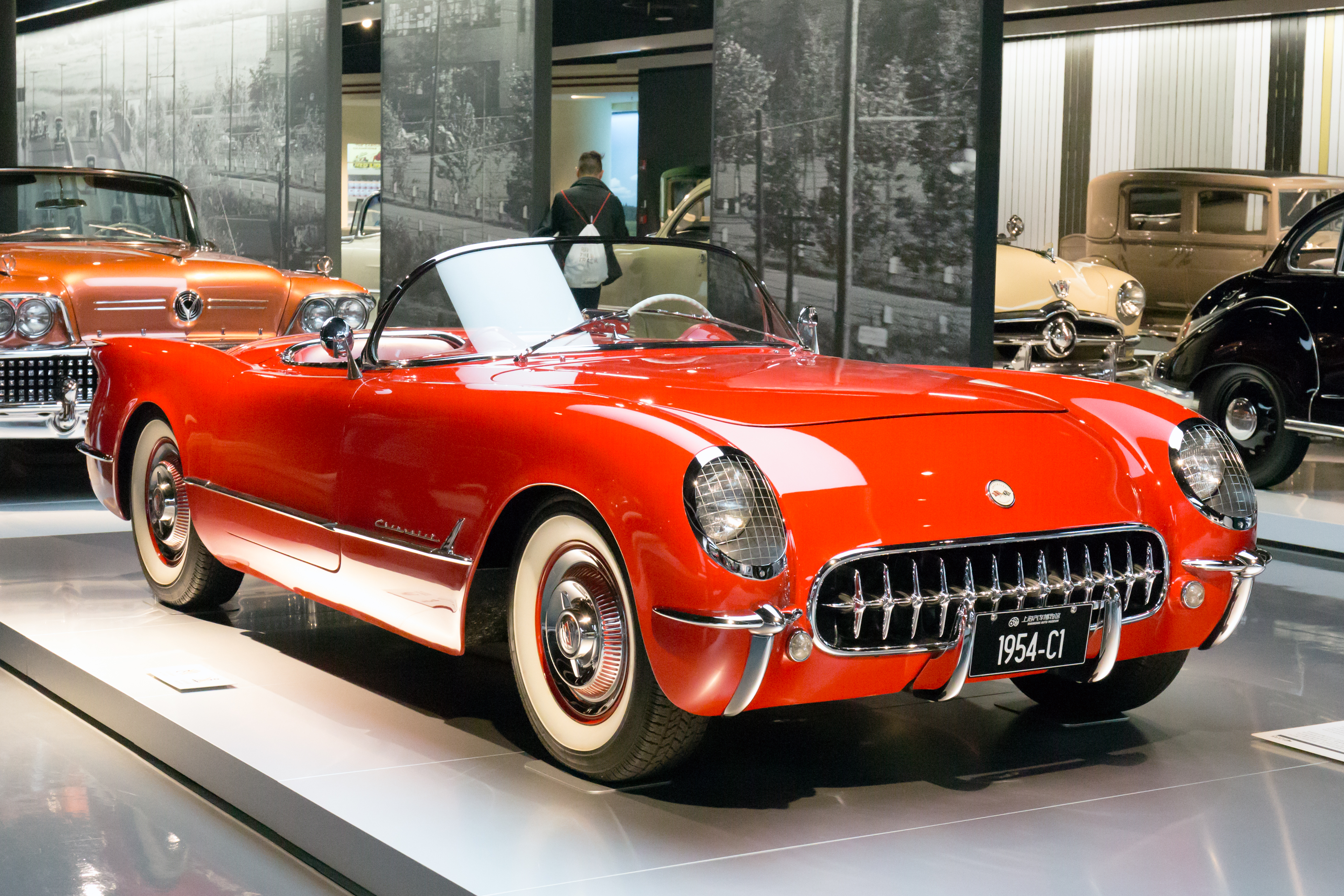
4. **Chevrolet Corvette (C1)**While the revelation of the mid-engine 2020 Chevrolet Corvette justifiably ignited a fervor of excitement and revelry among enthusiasts of affordable American performance, a remarkably similar scene unfolded more than 70 years earlier. On January 17, 1953, Chevrolet presented the very first Corvette at the opulent Waldorf-Astoria hotel in New York, a moment that would forever alter the course of American automotive history. The grand ballroom of the Waldorf was packed with an eager audience, entertained by an orchestra, singers, and dancers, as the new roadster made its dramatic and eagerly anticipated debut.
The EX-122 concept car, which captivated attendees at the Waldorf, had been meticulously under development since 1951. This groundbreaking vehicle was destined to become the first sports car ever made by any GM division, signaling a bold new direction for the automotive giant. Its genesis lay in the discerning eye of automotive designer and GM vice president Harley Earl, who, impressed with the nimble European roadsters making their way into the country following World War II, sought to create an American interpretation. He shared his visionary idea with engineering chief Ed Cole, sparking a collaborative passion project.
Both Earl and Cole shared an immense enthusiasm for the project, and in 1952, they presented their compelling sketches to GM management. The proposal received swift approval to develop a prototype, setting in motion the creation of an automotive icon. Although the EX-122 had initially been built solely to gauge the potential market for a new American sports car, the overwhelmingly positive response it garnered prompted Chevrolet to make a decisive move: to put the Corvette into immediate production.
In 1953, Chevrolet delivered 300 hand-built examples of these fiberglass-bodied vehicles, marking the birth of a legend. The finished version of the Corvette remarkably retained almost all of the exterior details of the original concept, a testament to the strength and appeal of Earl’s initial design. While the interior received several thoughtful updates to enhance its production readiness, the essence of the concept remained intact. Although the early Corvettes initially failed to deliver a truly brisk driving experience due to the underpowered Blue Flame inline-six engine, the subsequent introduction of a potent V8 engine transformed it into a genuine performer, firmly cementing its place in history as America’s true sports car, a legacy that continues to thrive to this day.
Car Model Information: 2019 Chevrolet Corvette Stingray
Name: Chevrolet Corvette
Caption: 2021 Chevrolet Corvette C8
Manufacturer: Chevrolet
Production: 1953–present
ModelYears: bulleted list
Assembly: bulleted list
Class: Sports car
BodyStyle: coupé
Layout: Front-engine, rear-wheel-drive layout,Rear mid-engine, rear-wheel-drive layout
Categories: 1950s cars, 1960s cars, 1970s cars, 1980s cars, 1990s cars
Summary: The Chevrolet Corvette is a line of American two-door, two-seater sports cars manufactured and marketed by General Motors under the Chevrolet marque since 1953. Throughout eight generations, indicated sequentially as C1 to C8, the Corvette is noted for its performance, distinctive styling, lightweight fiberglass or composite bodywork, and competitive pricing. The Corvette has had domestic mass-produced two-seater competitors fielded by American Motors, Ford, and Chrysler; it is the only one continuously produced by a United States auto manufacturer. It serves as Chevrolet’s halo car.
In 1953, GM executives accepted a suggestion by Myron Scott, then the assistant director of the Public Relations department, to name the company’s new sports car after the corvette, a small, maneuverable warship. Initially, a relatively modest, lightweight 6‑cylinder convertible, subsequent introductions of V8 engines, competitive chassis innovations, and rear mid-engined layout have gradually moved the Corvette upmarket into the supercar class. In 1963, the second generation was introduced in coupe and convertible styles. The first three Corvette generations (1953–1982) employed body-on-frame construction, and since the C4 generation, introduced in 1983 as an early 1984 model, Corvettes have used GM’s unibody Y‑body platform. All Corvettes used front mid-engine configuration for seven generations, through 2019, and transitioned to a rear mid-engined layout with the C8 generation.
Initially manufactured in Flint, Michigan, and St. Louis, Missouri, the Corvette has been produced in Bowling Green, Kentucky, since 1981, which is also the location of the National Corvette Museum. The Corvette has become widely known as “America’s Sports Car.” Automotive News wrote that after being featured in the early 1960s television show Route 66, “the Corvette became synonymous with freedom and adventure,” ultimately becoming both “the most successful concept car in history and the most popular sports car in history.”
Get more information about: Chevrolet Corvette
Buying a high-performing used car >>>
Brand: Chevrolet Model: Corvette
Price: $47,990 Mileage: 20,872 mi.
Read more about: The Enduring Legacy: Unpacking the Secret History of the Iconic Chevrolet Corvette Z06 from Duntov’s Vision to C8 Mid-Engine Prowess
5. **Alfa Romeo Brera Concept**One characteristic that nearly all cars ever built by the revered Italian automaker Alfa Romeo share is an undeniable sense of beauty. Regardless of how meticulously built, how efficient, how powerful, or how reliable any particular model might be, Alfa Romeo’s styling through the decades possesses an almost magical ability to stir profound emotion purely through its visual appeal. This inherent trait, a commitment to aesthetic excellence, extends effortlessly to its many concept cars, whether they possess a high likelihood of production or are merely fantastical design exercises.
While many concepts are destined to remain beautiful but unproduced dreams, the sporty 2002 Brera concept exhibited a much greater potential for making the leap to the real world. This stunning machine was styled by the inimitable Giorgetto Giugiaro, a titan in automotive design, who crafted a vision that looked like an elegant and harmonious blend of practicality and undeniable style. The Brera concept was an immediate head-turner, hinting at a future where everyday usability could coexist with breathtaking artistry.
Giugiaro’s design for the Brera was particularly striking. It featured an elongated roofline that gracefully terminated at a rear hatch, ingeniously providing a space for luggage – a nod to its potential for real-world utility. However, certain elements were pure theater, designed solely to captivate and impress. The vertically opening doors, for instance, served no practical purpose beyond showcasing an extravagant flair, and as the context states, “that’s okay.” Without a shadow of a doubt, Giugiaro possesses an unparalleled talent for sculpting an attractive machine, and the Brera was absolutely no exception, confirming his mastery of form and proportion.
Once the Brera made its highly anticipated journey into production, its design was indeed “tamed but only a little,” a remarkable achievement given the usual compromises between concept and reality. Alfa Romeo managed to retain the shape and style almost completely, preserving the core aesthetic that had so captivated audiences. Sensibly, the impractical vertically opening doors were nixed, and the car was fitted with a more conventional, yet still refined, interior. Beyond these pragmatic adjustments, the production Brera remained a stunningly beautiful car, proving that a bold and emotional design could successfully translate into a commercially viable and visually arresting vehicle, continuing Alfa Romeo’s proud tradition of automotive artistry.
Car Model Information: 2023 GMC Sierra 1500 AT4X
Name: Alfa Romeo Brera,Alfa Romeo Spider
Manufacturer: Fiat Auto
Production: 2005–2010 (Brera),2006–2010 (Spider)
Assembly: San Giorgio Canavese,Province of Turin
Layout: Front-engine, front-wheel-drive layout,Front-engine, four-wheel-drive layout
Platform: GM/Fiat Premium platform
Engine: Fiat Pratola Serra modular engines#Applications on Alfa Romeo vehicles,Alfa Romeo JTS engine,V6 engine,Fiat JTD engine,Straight-five engine
Transmission: Manual transmission,Selespeed,AWTF-80 SC
Class: Grand Tourer
BodyStyle: 2+2 (car body style),Roadster (automobile)
Predecessor: Alfa Romeo GTV and Spider
Wheelbase: 2528 mm
Abbr: on (Spider)
Length: 4410 mm
Width: 1830 mm
Height: 1341 mm
Weight: convert
Designer: Giorgetto Giugiaro,Pininfarina,Centro Stile Alfa Romeo (interior)
Related: Alfa Romeo 159
Categories: 2010s cars, Alfa Romeo vehicles, All-wheel-drive vehicles, Articles with short description, CS1: unfit URL
Summary: The Alfa Romeo Brera and the Alfa Romeo Spider (Type 939) are grand tourers using the GM/Fiat Premium platform, manufactured by Pininfarina and marketed by Alfa Romeo as a 2+2 coupé and roadster respectively.
12,488 units of the Spider and 21,786 units of the Brera were made with production ending in late 2010 and inventory remaining into 2011.
The name ‘Brera’ appears to come from the Brera district of Milan, which is known for being an artistic area and is sometimes referred to as the ‘Milanese Montmartre’. Alfa Romeo was established in Milan in 1910.
Get more information about: Alfa Romeo Brera and Spider
Buying a high-performing used car >>>
Brand: Alfa Romeo Model: Brera
Price: $64,995 Mileage: 13,767 mi.
Read more about: Remember These Rides? 14 Legendary Cars We’re Seriously Begging Automakers to Bring Back from Retirement

6. **Toyota FT-1**Toyota’s journey into performance began subtly, with its first fuel-injected car emerging in 1979 as an upgraded Celica, aptly named the Supra. For a period, it remained a decent choice for those seeking a typically reliable and somewhat sporty Toyota that offered a little extra punch. However, it was in the 1990s that the Supra truly transformed, offering something far more profound. Thanks to the hallowed 2JZ six-cylinder engine, bolstered by a pair of turbos, the 1993 to 1998 MkIV Supra ascended to legendary status, captivating a generation of enthusiasts.
Partly due to its multiple high-profile media appearances, the MkIV Supra garnered a hardcore legion of fans, who passionately desired its resurgence long after its production ceased. For many years, these supporters received nothing concrete from Toyota, leaving them to speculate and dream. Then, in 2014, a concept car appeared that dramatically raised the specter of a fifth-generation model, reigniting hope and excitement. This was the FT-1, standing for “Future Toyota 1,” a vehicle that powerfully represented what a Supra wearing modern skin might look like.
The FT-1 concept was clearly laid out as a front-engine and rear-wheel-drive car, a traditional configuration for performance. Intriguingly, no specific technical specifications were officially released upon its debut, fueling widespread speculation. Car and Driver, for instance, proclaiming “the death of the inline-6,” opined that a robust 5.0-liter V8 engine would be an entirely appropriate choice for such a striking machine. It was a moment of anticipation, where the visual promise alone spoke volumes about the car’s potential.
At the time of its unveiling, Toyota and BMW were in the nascent stages of their collaboration, but it’s crucial to note that the FT-1 concept was an unrelated design, emanating independently from Toyota’s California design studio. Regardless of its internal origins or lack of stated specifications, it looked undeniably good and clearly possessed the immense potential to be a worthy follow-up to the iconic MkIV Supra. Fortunately, Toyota ultimately decided to embrace the FT-1 as the foundational basis for a Supra revival, culminating in the release of the GR Supra for the 2020 model year. This production car featured a BMW engine and was built on a jointly developed platform, showcasing how a visionary concept can successfully bridge internal design efforts with strategic external partnerships to bring a beloved nameplate back to life.
Car Model Information: 2024 Toyota Supra 3.0 Premium
Name: Toyota Supra
Caption: Toyota GR Supra (J29/DB)
Manufacturer: Toyota
Aka: unbulleted list
Production: unbulleted list
Class: Sports car
BodyStyle: fastback,coupé
Layout: Front-engine, rear-wheel-drive layout
Predecessor: Toyota Celica (A20)
Categories: 1980s cars, 1990s cars, 2000s cars, 2010s cars, 2020s cars
Summary: The Toyota Supra (Japanese: トヨタ・スープラ, Hepburn: Toyota Sūpura) is a sports car and grand tourer manufactured and developed by the Toyota Motor Corporation beginning in 1978. The name “supra” is a definition from the Latin prefix, meaning “above”, “to surpass” or “go beyond”.
The initial four generations of the Supra were produced from 1978 to 2002. The fifth generation has been produced since March 2019 and later went on sale in May 2019. The styling of the original Supra was derived from the Toyota Celica, but it was longer. Starting in mid-1986, the A70 Supra became a separate model from the Celica. In turn, Toyota also stopped using the prefix Celica and named the car Supra. Owing to the similarity and past of the Celica’s name, it is frequently mistaken for the Supra, and vice versa. The first, second and third generations of the Supra were assembled at the Tahara plant in Tahara, Aichi, while the fourth generation was assembled at the Motomachi plant in Toyota City. The 5th generation of the Supra is assembled alongside the G29 BMW Z4 in Graz, Austria by Magna Steyr.
The Supra traces much of its roots back to the 2000GT owing to an inline-6 layout. The first three generations were offered with a direct descendant to the Crown’s and 2000GT’s M engine. Interior aspects were also similar, as was the chassis code “A”. Along with this name, Toyota also included its own logo for the Supra. It was derived from the original Celica logo, being blue instead of orange. This logo was used until January 1986, when the A70 Supra was introduced. The new logo was similar in size, with orange writing on a red background, but without the dragon design. That logo, in turn, was on Supras until 1991 when Toyota switched to its current oval company logo. The dragon logo was a Celica logo regardless of what colour it was. It appeared on the first two generations of the Supra because they were officially Toyota Celicas. The dragon logo was used for the Celica line until it was also discontinued.
In 1998, Toyota ceased sales of the fourth-generation Supra in the United States. Production of the fourth-generation Supra for worldwide markets ended in 2002. In January 2019, the fifth-generation Supra, which was co-developed with the G29 BMW Z4, was introduced.
Get more information about: Toyota Supra
Buying a high-performing used car >>>
Brand: Toyota Model: Supra
Price: $59,995 Mileage: 1,454 mi.
Read more about: The Uncomfortable Truth About the Resale Value of the Cadillac CT5-V: What Buyers Need to Know Before Going Bespoke

7. **Hyundai 45 EV Concept**Starting around late 2019, Hyundai embarked on a compelling journey, presenting a series of electric concept cars that skillfully blended the brand’s storied past with its ambitious future. One such striking example, introduced in 2021, was the restomod Heritage Pony EV concept, an electric vehicle designed to mirror Hyundai’s first domestically designed and built breakaway success, the original Pony. This initiative signaled a clear direction for the brand: to draw inspiration from its heritage while pushing boldly into electrification.
Prior to the Heritage Pony EV, Hyundai introduced the equally captivating 45 Concept. This was another EV, sharing a conceptual lineage with the Pony, but presenting a decidedly futuristic aesthetic. Its styling was sharp and angular, featuring distinctive lights that resembled pixels, and an overall design language that was unlike anything else seen on the road. It was an audacious statement, a clear break from conventional automotive design, hinting at a bold new visual identity for Hyundai’s electric future.
As is often the case with many concept cars, there was an expectation that the 45 Concept’s daring style would be significantly sculpted and trimmed down by various committees and management layers, resulting in a final production model that more closely resembled a sensible Korean family car. However, remarkably, this anticipated “watering down did not come to pass.” The concept astonishingly transformed into the Ioniq 5 EV, with “nearly every exterior line preserved,” a rare feat in the automotive industry.
The results were, and continue to be, striking. The production Ioniq 5 remains unlike anything else on the road, but in a way that makes it a fashionable and highly desirable car, earning critical acclaim and popular appeal. While the concept’s interior had “pushed the boundaries” and “had to be toned down for production,” it still “shuns convention,” maintaining an innovative and user-friendly cabin experience. Nonetheless, the Ioniq 5 has already proven itself a serious contender in the competitive EV market, with the high-performance Ioniq 5 N providing serious competition on the track. With this car, Hyundai looks exceptionally well-positioned for the future of the automobile, demonstrating how a truly bold concept can translate into a successful and distinctive production vehicle, maintaining its core identity and appeal.
From Showroom Dreams to Asphalt Reality: Exploring Seven More Iconic Concepts That Masterfully Transitioned to Production, Highlighting Their Enduring Impact on Design and Performance.
Having explored some truly incredible transformations, our journey into the world of visionary concepts that became production legends continues. The stories of these next seven vehicles further cement the idea that the boundaries of automotive design and engineering are constantly being pushed, and sometimes, those wildest dreams actually do make it off the drawing board and onto our roads, captivating enthusiasts and setting new standards.
Car Model Information: 2023 GMC Sierra 1500 AT4X
Sp: uk
Name: Hyundai Ioniq 5
Manufacturer: Hyundai Motor Company
ModelCode: NE
Production: March 2021 – present
ModelYears: 2022–present (North America)
Assembly: Unbulleted list
Designer: Lee Ji-hyeon
Class: Compact crossover SUV
BodyStyle: SUV
Layout: Unbulleted list
Platform: Hyundai E-GMP
Related: Unbulleted list
Motor: permanent magnet synchronous motor
Battery: SK On
ElectricRange: cvt
Charging: ubl
Wheelbase: cvt
Length: Unbulleted list
Width: Unbulleted list
Height: Unbulleted list
Weight: Unbulleted list
Categories: All-wheel-drive vehicles, All Wikipedia articles written in British English, Articles containing Korean-language text, Articles with short description, CS1 Indonesian-language sources (id)
Summary: The Hyundai Ioniq 5 (Korean: 현대 아이오닉 5) is a battery electric compact crossover SUV produced by Hyundai since 2021. It is the first product to be marketed under the Ioniq sub-brand, and the first model developed on the Hyundai Electric Global Modular Platform (E-GMP).
Get more information about: Hyundai Ioniq 5
Buying a high-performing used car >>>
Brand: Hyundai Model: 45 EV Concept
Price: $64,995 Mileage: 13,767 mi.
Read more about: Beyond the Pump: Unveiling 14 Crossovers That Redefine Fuel Efficiency in 2025-2026

8. **Acura NSX Mk II**While the original NSX was an undeniable triumph, fans were genuinely saddened when its production ceased. For years, a quiet longing for its return persisted, with a 2006 concept briefly hinting at a front-engine V10 successor that, ultimately, never materialized. However, Acura was not done with the NSX legacy, and a new vision began to take shape, aiming to redefine performance for a new era.
That vision was dramatically previewed by the 2012 NSX concept, showcasing another Honda-built supercar, but this time with a groundbreaking twist: it would be a hybrid. In an automotive landscape where hybrid performance was still emerging, particularly for high-performance vehicles, this represented new territory for Acura. Honda’s engineers approached this challenge with a familiar philosophy, seeking to make the new NSX excel not through sheer brute force from an enormous engine, but by applying proven Honda technology and meticulously minimizing the car’s weight, mirroring the principles that made the original so effective.
The 2012 concept featured a Honda V6 engine, now intelligently mated to an electric motor, with all-wheel drive achieved through additional motors strategically placed on the front wheels. This innovative configuration echoed how Chevrolet managed to create its first-ever AWD Corvette, demonstrating a sophisticated approach to power delivery and handling. The production version, launched in 2017 with relatively few cosmetic changes, delivered nearly 600 horsepower and was packed with advanced technology. Though it grappled with gaining the same level of attention as its iconic predecessor, the second-generation NSX stood as a testament to Acura’s continued pursuit of performance innovation, embracing hybrid technology to create a truly modern supercar.
Read more about: Gone But Not Forgotten: A Deep Dive Into 12 Pop-Up Headlight Icons We Seriously Miss (And Why Modern Cars Don’t Have Them Anymore)
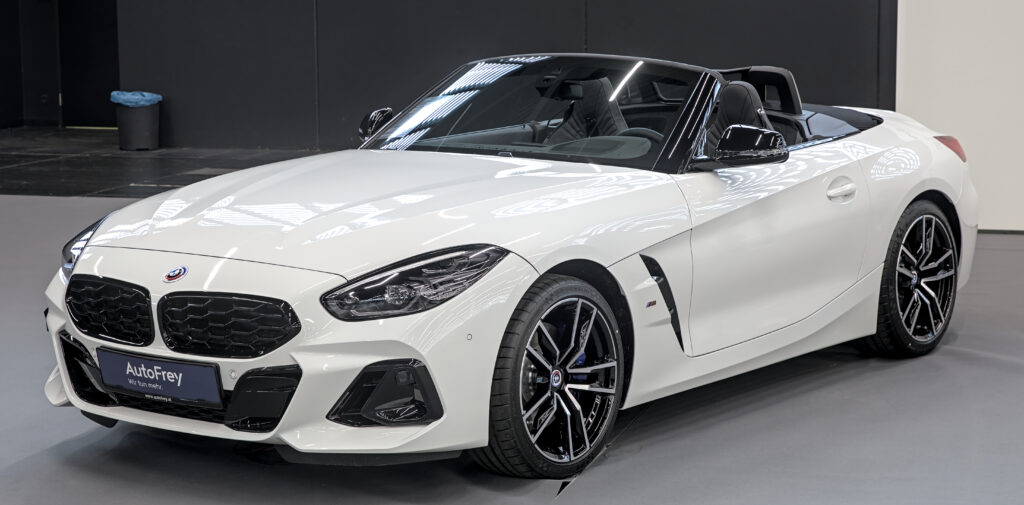
9. **BMW Z4**BMW’s rich heritage in roadsters stretches back to 1929, with a continuous line of enjoyable open-top two-seaters ever since. This esteemed lineage includes highlights like the beautiful 507 and the Z1 of 1988, which ushered in the modern era of BMW’s Z roadsters. Building on this legacy, the Z4 roadster, destined for the 2019 model year, made its initial appearance as a captivating concept back in 2017, generating significant buzz among enthusiasts and the public alike.
This concept cut an imposing figure, appearing both substantial and somewhat aggressive, particularly with a distinctive, shark-like quality to its nose. Despite its bold new lines, the iconic kidney grille immediately and unmistakably branded it as a BMW, ensuring its design continuity with the brand’s established identity. However, as this striking concept navigated through the various Bavarian committees responsible for approving new BMW models, it was noted to have received a touch of influence from Tokyo.
More precisely, this influence originated from Toyota City, a nod to the significant collaboration between Toyota and BMW in jointly developing both the Z4 and the new GR Supra. When this partnership became public, BMW was quick to assert that the Z4 and Supra would not be mere badge-engineered twins, a promise that indeed held true. While the Supra emerged as a Japanese performance icon imbued with a Bavarian heart, the Z4 steadfastly retained its character as a purely Teutonic luxury roadster, exactly as one would expect from BMW. Though the concept struck a more dramatic pose, the production car wisely toned down some of its initial panache into a refined and sensible form, perfectly suited for the discerning buying public, proving that collaboration can yield distinct and successful outcomes for both brands.
Read more about: Unleash the G-Forces: 12 Thrilling Sports Coupes That Redefine Speed and Humiliate Supercars – Have You Tamed Any?
10. **Audi Le Mans Quattro Concept**For decades, Audi built its reputation on the formidable Quattro all-wheel-drive system and its dominance in rally racing, which translated into a strong identity for high-performance versions of its conventional passenger cars. However, in 2003, Audi unveiled a trilogy of concept cars, and one of them, the Audi Le Mans Quattro Concept, truly stood out. It captured attention not only for its stunning aesthetics but also for its unorthodox-for-Audi design, offering the public a tantalizing glimpse of what a proper Audi supercar might entail.
This concept presented a thrilling and almost unbelievable idea for Audi: a mid-engine configuration, seating only two low-slung passengers, and with virtually no luggage capacity. At the time, such a proposition seemed as fantastical as a nuclear-powered Ford from the 1960s. Yet, this fully functional concept was anything but a mere flight of fancy. It boasted a twin-turbo V10 engine, borrowed from Lamborghini, churning out an impressive 600 horsepower, a testament to Audi’s racing success and engineering ambition. It was a stunning idea, until it became a stunning reality.
Remarkably, with very few changes in its styling, Audi brought the Quattro concept to production, christening it the R8, which debuted in 2007. The car entered Audi into an upper echelon of automakers, a position it has maintained ever since. By 2009, the R8 returned to its V10 configuration, fittingly utilizing a V10 engine sourced from Lamborghini, which, in a delightful twist of fate, had initially been developed by Audi itself. Through continuous improvements and thoughtful stylistic updates, the R8 remains to this day one of Germany’s most desirable and fastest cars, a true icon born from a concept that dared to dream beyond Audi’s established boundaries.
Car Model Information: 2023 GMC Sierra 1500 AT4X
Name: Audi Le Mans quattro
Manufacturer: Audi
Production: 2003
Assembly: Neckarsulm
Designer: Bernhard Voll (project leader),Rüdiger Kiehn (design project manager),Frank Lamberty (exterior designer),Jens Sieber (interior design)
Class: Concept car
BodyStyle: coupé
Related: SEAT Cupra GT,Lamborghini Gallardo,Audi R8 (Type 42)
Layout: mid-engine design,quattro (four wheel drive system),all-wheel drive
Engine: Double overhead camshaft,twin-turbocharged,Gasoline direct injection,V10 engine
Transmission: automated manual transmission
Wheelbase: 2649 mm
Abbr: on
Length: 4369 mm
Width: 1900 mm
Height: 1245 mm
Weight: 1530 kg
Predecessor: Audi Rosemeyer
Successor: Audi R8
Categories: Articles with short description, Audi concept vehicles, Commons category link is on Wikidata, Rear mid-engine, all-wheel-drive vehicles, Short description matches Wikidata
Summary: The Audi Le Mans quattro is a concept car, developed by German automobile manufacturer Audi, for presentation at the 2003 Frankfurt Motor Show, to celebrate Audi’s three successive wins at the arduous 24 Hours of Le Mans endurance race in 2000, 2001, and 2002. It was the third and final concept car designed by Audi in 2003, following the Pikes Peak quattro and the Nuvolari quattro.
Audi’s subsidiary quattro GmbH subsequently decided to produce the Audi Le Mans Quattro as a production road car, calling it the R8, naming it after Audi’s R8 LMP race car, which is notable for being one of the most successful cars in the history of the 24 Hours of Le Mans with five overall wins.
Get more information about: Audi Le Mans quattro
Buying a high-performing used car >>>
Brand: Audi Model: Le Mans Quattro
Price: $64,995 Mileage: 13,767 mi.
Read more about: 13 Compelling Reasons the New Audi Q8 e-tron Makes the Electric Switch Worthwhile for Discerning Drivers

11. **BMW Vision EfficientDynamics**The automotive world vividly remembers BMW’s first mid-engine creation, the spectacular M1 from 1979, which stood in a class of its own for decades. This singular status appeared poised for a dramatic shift when BMW unveiled its groundbreaking Vision EfficientDynamics concept in 2009. This striking concept was introduced as a key component of BMW’s ambitious push to develop the next generation of automobiles, clearly signaling the future direction of the brand.
The Vision concept effectively prefaced the launch of BMW’s highly efficient ‘i’ brand, a pioneering sub-brand known for illustrious vehicles such as the compact, range-extended hybrid BMW i3. Much like its commuter-oriented sibling, which could be optioned with a small 647 cc gasoline range extender, the excitingly styled Vision concept was powered by a three-cylinder diesel engine. However, its true performance capabilities, including hitting 60 mph in under five seconds, were predominantly thanks to its powerful electric drivetrain, showcasing a remarkable blend of efficiency and speed.
Designed to highlight EV technology with the flexibility of using fossil fuels only when absolutely necessary, the Vision concept was a bold statement. While the subsequent production BMW i8, which evolved from the Vision, wasn’t quite as wild in its final design as the concept, it still significantly pushed the envelope, retaining undeniable supercar aesthetics. With its upward and forward-opening dihedral doors and seats positioned almost scraping the ground, the i8 possessed all the elements of a true supercar. Unfortunately, despite its innovative spirit and striking looks, the i8 carried a bit of baggage, failing to fully live up to the sky-high expectations it had generated, ultimately disappointing some who had fallen in love with the initial vision, yet still marking an important chapter in BMW’s electrification journey.
Car Model Information: 2023 GMC Sierra 1500 AT4X
Name: BMW X5
Manufacturer: BMW
Production: 7 July 2006 – 28 June 2013
Predecessor: BMW X5 (E53)
Successor: BMW X5 (F15)
Platform: BMW L4
Related: BMW 5 Series (E60),BMW X6#E71
Class: Mid-size,luxury car,crossover SUV
Assembly: Greer, South Carolina,Toluca,Kaliningrad
ModelYears: 2007–2013
Engine: BMW N55,Straight-six engine
Transmission: automatic transmission
Wheelbase: 2933 mm
Abbr: on
Length: 4854 mm
Width: 1933 mm
Height: 1766 mm
BodyStyle: Sport utility vehicle
Designer: Pierre Leclercq (2003)
ModelCode: E70
Categories: All articles with dead YouTube links, All articles with unsourced statements, Articles with dead YouTube links from February 2022, Articles with short description, Articles with unsourced statements from August 2010
Summary: The BMW E70 is the second-generation BMW X5 mid-size luxury crossover SUV. It replaced the BMW X5 (E53) in July 2006. It was manufactured alongside the BMW X6 at BMW’s Greer, South Carolina plant in the U.S. and BMW’s facility in Toluca, Mexico.
Get more information about: BMW X5 (E70)
Buying a high-performing used car >>>
Brand: BMW Model: Vision EfficientDynamics
Price: $64,995 Mileage: 13,767 mi.
Read more about: Electrifying Performance: Why Modern Sports Cars Are Unleashing the Power of Hybrid Systems
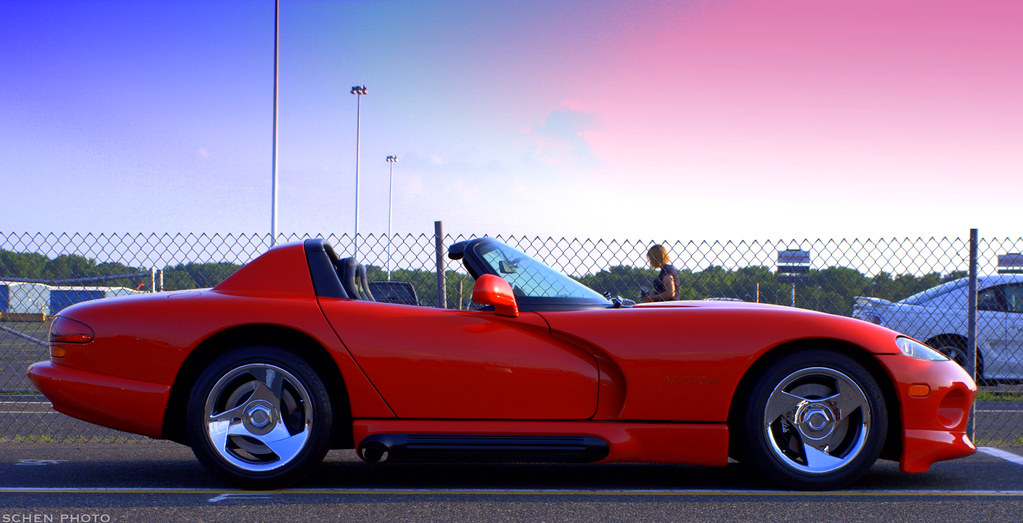
12. **Dodge Viper**In today’s automotive landscape, the fastest and most brutal performance cars are often marvels of technological sophistication, seamlessly blending state-of-the-art engineering with advanced computer science. However, at the dawn of the digital age for automobiles, there arrived the Dodge Viper—a predominantly analog beast that, ironically, harnessed nascent digital controls to unleash raw, unadulterated performance. Before the Viper roared into dealerships nationwide, a captivating Viper concept car hit the auto show circuit, setting hearts racing.
This concept was presented as a possible performance car, deliberately built in the spirit of the iconic Shelby Cobra, a heritage that immediately resonated with enthusiasts. Crucially, it even received direct input from none other than Carroll Shelby himself, which helped to generate an eager and hopeful fanbase right from the start. Initially, the 1989 prototype featured Chrysler’s largest engine at the time, a robust 360 V8, typically reserved for trucks. However, with invaluable assistance from Chrysler-owned Lamborghini, this engine evolved into a formidable V10 truck engine, cast in lightweight aluminum instead of heavy iron and meticulously warmed over for performance, making its way into the final design.
The Dodge Viper made its stunning debut at the 1989 North American International Auto Show, where its flowing curves and overtly sporting appeal captivated crowds. The fact that it lacked a roof mattered little to onlookers, as its extraordinarily long hood and prominent side exhaust pipes unmistakably signaled that this was a car built purely for speed and exhilaration. The overwhelmingly positive reaction to the concept solidified its momentum, leading to its production for the 1992 model year, remarkably largely unchanged from the prototype. The fan-favorite Viper defied its planned five-year production run, continuing far beyond and finally concluding its legendary journey in 2017, having cemented its place as an uncompromised American performance icon.
Car Model Information: 2017 Dodge Viper GTC
Name: Dodge Viper
Caption: 2013 SRT Viper GTS Launch Edition
Manufacturer: Dodge
Production: 1991–2006,2007–2017
Assembly: Detroit,Michigan
Class: Sports car
BodyStyle: liftback,coupe
Layout: Longitudinal engine,Front mid-engine, rear-wheel drive layout
Engine: Viper engine,{{convert,488,cuin,L,abbr=on,1,order=flip,lk=on
Abbr: on
Order: flip
Powerout: SR-I and II:,{{convert,400,hp,PS kW,0,abbr=on,lk=on
Lk: on
ModelYears: 1992–2006,2008–2017
Categories: 1990s cars, 2000s cars, 2010s cars, All accuracy disputes, All articles with unsourced statements
Summary: The Dodge Viper is a sports car that was manufactured by Dodge (by SRT for 2013 and 2014), a division of American car manufacturer Chrysler from 1992 until 2017, having taken a brief hiatus in 2007 and from 2011 to 2012. Production of the two-seat sports car began at New Mack Assembly Plant in 1991 and moved to Conner Avenue Assembly Plant in October 1995.
Although Chrysler considered ending production because of serious financial problems, on September 14, 2010, then–chief executive Sergio Marchionne announced and previewed a new model of the Viper for 2012. In 2014, the Viper was named number 10 on the “Most American Cars” list, meaning 75% or more of its parts are manufactured in the U.S. The Viper was eventually discontinued in 2017 after approximately 32,000 were produced over the 26 years of production.
The 0–60 mph (97 km/h) time on a Viper varies from around 3.5 to 4.5 seconds. Top speed ranges from 160 mph (260 km/h) to over 200 mph (320 km/h), depending on variant and year.
Get more information about: Dodge Viper
Buying a high-performing used car >>>
Brand: Dodge Model: Viper
Price: $275,000 Mileage: 13,105 mi.
Read more about: Seriously, What Happened? 13 Legendary Muscle Cars Automakers Just Don’t Build Anymore, But Absolutely Should!

13. **Jaguar C-X16**Jaguar, the Coventry-based British carmaker, has long been revered for its rich heritage and deep connection to its legendary history. However, as the late 2000s approached, Jaguar embarked on a bold and dynamic transformation, embracing a more modern aesthetic that blended sophisticated Bond-like styling with cutting-edge technology. One of the pivotal cars conceived during this period was the C-X16 Concept, which was ideated when Jaguar decided to create a spiritual successor to one of their most iconic vehicles: the 1960s E-type.
The C-X16 concept made a significant splash upon its debut at the 2011 Frankfurt Motor Show. This striking hybrid sports car was a powerful statement of Jaguar’s commitment to seamlessly blending exhilarating performance with a newfound focus on sustainability. Under its sleek hood, the concept housed a potent 3.0-liter supercharged V6 engine, capable of delivering 380 horsepower and propelling the car from 0 to 60 mph in a swift 4.4 seconds, clearly demonstrating its serious performance credentials.
Enthusiasts who admired the C-X16 concept were absolutely thrilled when it later evolved directly into the Jaguar F-Type, solidifying its place in automotive history as a production legend. While the clamshell front hood of the concept was eventually dropped, the production F-Type still screamed “modern-day E-Type” from every angle, largely retaining the exact same gorgeous design, courtesy of the inimitable Ian Callum. This successful transition made the F-Type one of the most stunningly beautiful cars of our time, proving that bold, visionary concepts can indeed translate into commercially viable and aesthetically arresting vehicles, paving the way for future innovations in the Jaguar lineup.
Read more about: Beyond the Obvious: 14 Overlooked Convertibles Ready to Transform Your Summer Road Trips

14. **Chevrolet Camaro (2006 Concept)**In the early 2000s, American manufacturers enthusiastically embraced a retro-futuristic design philosophy, seeking to recapture the glorious essence of the 1960s muscle car era. Among these efforts, the 2006 Camaro concept emerged as arguably the most stunning, instantly captivating audiences with its incredible exterior and interior design. It was an undeniable and explicit throwback to the classic 1960s aesthetic, perfectly blending nostalgia with modern sensibilities.
This concept car quickly gained widespread fame, notably through its prominent feature in the 2007 *Transformers* movie, where it became instantly recognizable as the beloved yellow Autobot, “Bumblebee.” This cinematic exposure catapulted the concept into the popular consciousness, creating an immense demand and anticipation for a production version that would stay true to its stunning prototype. Fortunately for legions of fans, Chevrolet decided to settle on the design as it was, bringing the concept’s striking looks directly to the production version.
The design of the fifth-generation Camaro proved so immensely popular that some tuning companies even began offering modifications to bring back certain elements seen only on the concept, such as exhaust tips that mimicked the shape of the taillights. The production model also faithfully retained the concept’s engine—a robust 6.0-liter V-8, later replaced by an even more powerful 6.2-liter unit—ensuring its performance matched its aggressive looks. This seamless transition from concept to production, maintaining the core aesthetic and spirit, underscored the Camaro’s enduring appeal and cemented its place as a truly legendary American muscle car, a perfect blend of heritage and contemporary power.
Car Model Information: 2018 Chevrolet Camaro 1SS
Name: Chevrolet Camaro
Manufacturer: Chevrolet
Production: 1966–2002,2009–2023
ModelYears: 1967–2002,2010–2024
Class: Pony car
BodyStyle: coupe,convertible
Platform: GM F platform,GM Zeta platform,GM Alpha platform
Layout: Front-engine, rear-wheel-drive layout
Categories: 1970s cars, 1980s cars, 1990s cars, 2+2 coupés, 2000s cars
Summary: The Chevrolet Camaro is a mid-size American automobile manufactured by Chevrolet, classified as a pony car. It first went on sale on September 29, 1966, for the 1967 model year and was designed to compete with the Ford Mustang. The Camaro shared its platform and major components with the Firebird, produced by General Motors’ Pontiac division that was also introduced for the 1967 model year.
Four distinct generations of the Camaro were developed before production ended in 2002. The nameplate was revived on a concept car that evolved into the fifth-generation Camaro; production started on March 16, 2009.
Production of the sixth generation of the Camaro ended in December 2023, for the 2024 model year.
Get more information about: Chevrolet Camaro
Buying a high-performing used car >>>
Brand: Chevrolet Model: Camaro
Price: $33,988 Mileage: 49,199 mi.
Read more about: Mechanics Sound the Alarm: 12 Trucks and Their Years You Absolutely Must Avoid
And there you have it – a dazzling showcase of ingenuity where dreams truly meet asphalt. These concepts are more than mere sketches; they are bold declarations of intent, challenging the norms and pushing the boundaries of what’s possible. Each vehicle’s journey from speculative vision to legendary production car is a testament to the unyielding spirit of automotive innovation, reminding us that sometimes, the most audacious ideas are the ones that fundamentally reshape our world. From the thrilling roar of a V10 to the silent surge of electric power, these machines don’t just move us from point A to point B; they propel our imagination forward, forever changing our perception of what a car can be.

